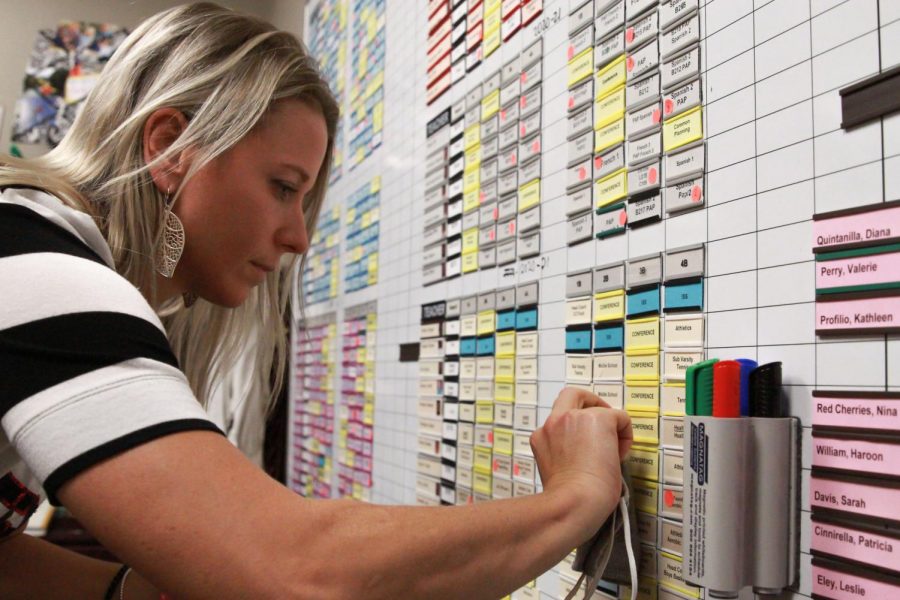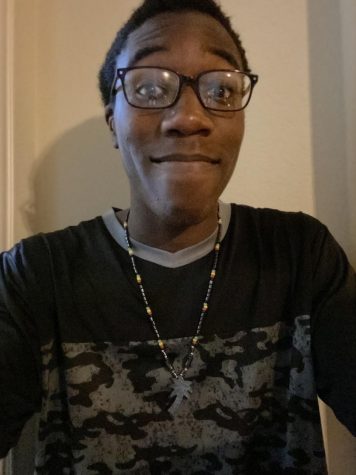Scheduling Conflicts
A closer look at why lots of students had messed up schedules
September 16, 2020
Jacob Pryor sits in front of his computer screen anxiously awaiting to receive his schedule. When he finally sees it, he is overcome with feelings of confusion, stress, and outrage.
Due to COVID-19, this year’s classes have been split into two sections: Face2Face and the Virtual Academy. Because of this the staff was required to create two master schedules for each type of class, to which they were only notified about halfway through summer resulting in an extremely small window of time.
“We had to work with the same number of teachers we had in the spring with this whole different set up which needs more staff,” Associate Principal Michelle Zurek said. “It was like an unsolvable puzzle.”
With such a complex task and so little time to complete it, accomodating for the requests of every student was nearly impossible. As such, many students found themselves with schedules that hardly resembled their requests.
According to Zurek an estimated 250 to 300 students have requested schedule changes since the beginning of the school year. Mistakes were made during the scheduling process as well. Some students were initially missing classes that were necessary for graduation.
“I knew some people who just didn’t have core classes,” Senior Jacob Pryor said. “I knew one person who was missing an English class. I knew someone who didn’t have a math class. Some people needed health and prof com and only got health.”
This caused the counselors and principals workload to be magnified to a level greater than they’ve ever had to deal with.
“It’s like I’m constantly pulling weeds out of the garden and then the next day they’re right back.” Zurek said. “That’s how it was for about a straight month. We wanted to pull our hair out.”
The counselors have also been forced to deal with the frustration of students and parents who got placed in classes that they didn’t want, which hindered their work.
“When you’re stretched thin and then you’ve gotta take hits from people that aren’t happy, it makes it harder to take.” Zurek said. “And that’s why I want everyone to understand that it’s not really perfect for anyone right now.”
The situation has caused lots of confusion for many students. Some have found it significantly more difficult to perform their typical academic tasks. With students constantly switching classes, they find themselves in classes that have already gone through weeks of material, making it more difficult to catch up with with the rest of the class.
“The teachers still expected me to catch up and do all the work despite having no idea what’s going on.” Pryor said
Pryor had requested his schedule change the Saturday after the first week of school and received his updated version the next Tuesday. He had four classes that needed to be changed and had to catch up with the work from all of them.
This also adds an additional issue of teachers being behind on grading due to a number of students leaving and entering their classes with little to no warning.
“That’s probably why I’ve been so slow to put in grades,” Astronomy and Environmental Science teacher Kelly Servey said. “Because of the fact that I knew they were going to get switched out and I didn’t know who.”
The scheduling dilemma made placing students into classes that they are happy with a much more complicated process than it normally is. And, while things have calmed down since the beginning of the year, complications still remain, especially with the upcoming choice for students to switch their classroom environment on Sept. 14.

If a student decides to switch learning environments at the start of the next marking period, they will be put on the opposite master schedule and their class periods and teachers will have to be switched around, unless the class is co-seated between both schedules.
“We’re all kind of doing the best we can,” Zurek said. “[I] just hope that this whole thing can improve for the world and that we can start doing a lot of the things that we wanna do and not have to worry so much about being safe.”




